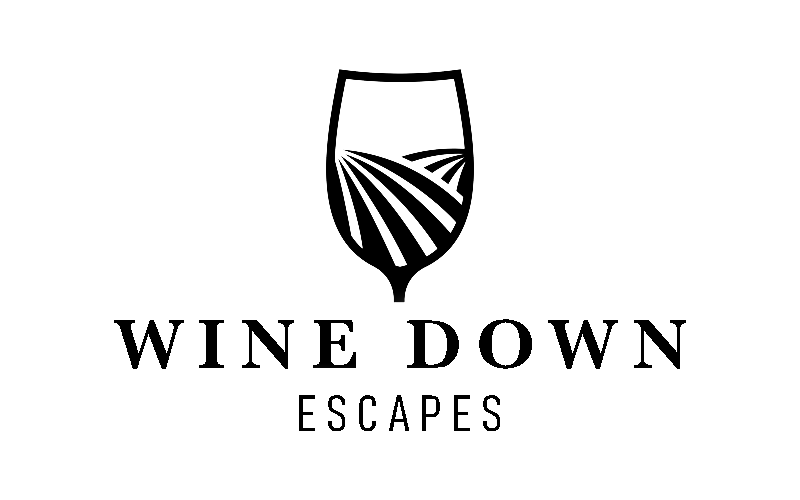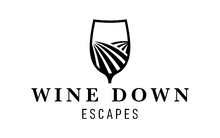Let Us Plan Your Perfect escape
We'd love to hear from you
Have a question, comment, or need assistance? Feel free to reach out to our team. We're here to help make your experience exceptional.
Contact Us
Wine Country 101
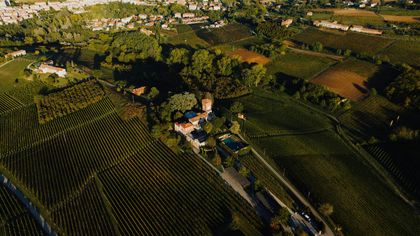
Planning Your Visit
Discover everything you need to know to plan a seamless and enjoyable Napa Valley getaway, from tasting costs to the best times to visit.
What is the average cost of a wine tasting in Napa Valley?
Wine tasting prices range from $40 to $300+ per person, depending on the winery, the types of offerings, and the value of the wine. We can help you select options that fit your preferences and budget.
How many wineries should we visit in a day?
For an enjoyable, unrushed experience, visiting 2-3 wineries per day is ideal. Each tasting usually takes about 60-90 minutes, and travel time between wineries adds up. This pace also allows for lunch and time to savor the wines without feeling rushed.
Do we need to make reservations at wineries?
Yes, reservations are highly recommended, especially for popular or smaller wineries that have limited space. Reservations ensure you have a spot, a dedicated host, and often allow for a more personalized experience. Many wineries in Napa require appointments to control crowd sizes.
What are the best times of year to visit Napa Valley?
Napa Valley is beautiful year-round, but each season offers unique experiences. Spring brings wildflowers and mild weather with fewer crowds. Summer is lively and warm, with long days. Fall is harvest season, offering peak activity and prices, and winter is quieter and more affordable but rainy.
What airports are closest to Napa Valley?
The closest major airports to Napa Valley are San Francisco International (58 miles), Oakland International (51 miles), Santa Rosa (49 miles), and Sacramento International (around 1 hour 15 minutes away). Each provides convenient access depending on your travel plans.
Is it better to visit during the week or on weekends?
Weekdays are generally less crowded, providing a more relaxed and intimate experience at popular wineries. On weekends, Napa Valley can get busier, especially during peak seasons, which may mean more crowded tasting rooms and more expensive hotel accommodations.
What is the benefit of hiring a driver for our trip?
A driver offers both safety and convenience, allowing you to fully enjoy your tastings without worrying about driving or navigating. Drivers are familiar with the area and can help keep your schedule on track, making it easier to arrive on time for each appointment.
Are there non-wine activities to do in Napa Valley?
Absolutely! Besides wine tasting, Napa offers hot air balloon rides, spa experiences, hiking trails, golf courses, and culinary tours. There’s also fantastic shopping, art galleries, and opportunities to take scenic drives through the vineyards and picturesque landscapes.
Can we bring children to Napa Valley wineries?
Yes, but keep in mind that family-friendly options are more limited. However, with thoughtful planning, you can still create an enjoyable experience for everyone, including children.
What should I wear for a day of wine tasting?
Napa Valley has a casual yet chic vibe. Comfortable, smart-casual clothing and layers are ideal, as temperatures can vary throughout the day. Avoid strong perfumes, as they can interfere with wine aromas, and opt for comfortable shoes if you’ll be walking through vineyards.
How far in advance should I begin the planning process?
For peak seasons like summer and harvest (fall), booking up to 6 months in advance is recommended. Hotels and inns fill up quickly during these times, and early booking can help secure better rates and availability, especially for popular places.
Is Napa Valley accessible for people with mobility issues?
Absolutely. Many wineries and accommodations in Napa Valley offer accessibility features. We’ll make sure your itinerary includes the appropriate arrangements to ensure a comfortable and enjoyable trip.
What’s the difference between Napa Valley and Sonoma?
While both regions are renowned for their wines and scenic beauty, Sonoma generally offers a more relaxed atmosphere and is known for Pinot Noir, Chardonnay, Zinfandel, and sparkling wines. Napa Valley, on the other hand, is famed for its Cabernets and luxury experiences. Both regions have their unique charm and cater to different preferences.
What weather should I expect during different seasons?
Spring is mild with occasional rain, summer is warm and dry, fall is cooler and ideal for harvest, and winter can be rainy and chilly. Regardless of the season, evenings in Napa are often cool, so it’s wise to bring layers.
Are there any events or festivals we should consider when planning our trip?
Yes, Napa Valley hosts several events, such as the Napa Valley Wine Auction in June, the Harvest Season in fall, and Cabernet Season in winter. These events offer unique wine experiences, but they also bring larger crowds, so plan accordingly if you’re visiting during these times.
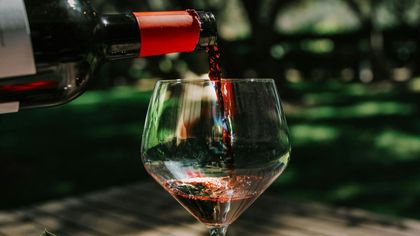
Wine Tasting Essentials
Get the basics of wine tasting and find answers to common questions, so you can savor every sip like a pro.
What are the basic steps of wine tasting?
Wine tasting involves five main steps: Observe the color, noting shades that can hint at age or grape type. Swirl the wine to release aromas, smell it deeply to identify the scents, taste to note the flavors, and finally savor the wine’s finish to appreciate its full complexity. Each step enhances the sensory experience of tasting wine.
How should I hold my wine glass during a tasting?
Hold the glass by the stem rather than the bowl. This keeps the wine at its ideal temperature by preventing the warmth from your hands from affecting it. Holding the stem also keeps the bowl clear of fingerprints, allowing you to better appreciate the color and clarity.
Why is swirling wine important?
Swirling aerates the wine, meaning it introduces oxygen, which helps release the wine’s aromas. This process can make the wine’s bouquet richer and more layered, allowing you to pick up on subtle scents that might otherwise go unnoticed. There is no need to swirl sparkling wine as the bubbles naturally release the aromas.
What should I look for when observing the color of wine?
The color of wine can provide clues about its age, grape variety, and even region. Younger red wines tend to be more vibrant, often deep ruby or purple, while older reds fade to brick or tawny hues. White wines deepen in color with age, moving from pale yellow to gold.
How do I properly smell the wine?
Take a few quick sniffs, pausing to note different aromas each time. Swirling the wine beforehand helps to release these scents, which can range from fruity and floral to earthy or spicy. Try to identify familiar aromas, as this can enhance your tasting experience and deepen your understanding of the wine’s profile.
Is it necessary to taste and spit the wine?
While not required, spitting is common if you’re tasting many wines in one session. It prevents intoxication and allows you to taste more wines while still appreciating their flavors. Most wineries provide a designated place to spit, and it’s perfectly acceptable.
What are tannins, and why do they matter?
Tannins are natural compounds found in grape skins, seeds, and stems, especially in red wines. They give structure and add a drying sensation on the palate. Tannins can affect the wine’s texture and aging potential, making it feel smooth or more astringent, depending on the type and quality.
How can I tell if a wine is sweet or dry?
A wine’s sweetness level is determined by the amount of residual sugar left after fermentation. Dry wines have little to no residual sugar, creating a less sweet, crisp taste, while sweet wines retain more sugar. Look for tasting notes or ask your host to clarify if you’re unsure.
What foods pair best with different wine types?
Sweet wines pair wonderfully with desserts, while a Cabernet does complement rich, dark chocolate. Each wine variety has its ideal pairings to enhance flavors. Let us guide you through curated wine and food experiences during your trip.
What’s the difference between aroma and bouquet?
Aroma refers to the scents that come directly from the grape variety, usually found in younger wines (e.g., fruity or floral notes). Bouquet, however, is the set of complex scents that develop as wine ages, stemming from fermentation, barrel aging, or bottle aging (e.g., nutty, smoky, or earthy notes).
How long should I let wine stay in my mouth before swallowing?
Allow the wine to linger for 3-5 seconds, swishing it gently to cover all parts of your palate. This helps reveal the wine’s flavors, texture, and nuances, allowing for a more complete tasting experience.
What should I pay attention to when savoring wine?
Savoring involves noting the wine’s sweetness (if any), acidity (which gives it a refreshing quality), body (its weight or richness), tannins (for reds, the drying effect), and finish (the lingering taste after swallowing). Each of these elements adds depth to the wine and speaks to its quality.
How do I identify different flavors in a wine?
Start by focusing on familiar flavors, like fruit, spice, or earth. Wines can have many layers, so take time to appreciate each sip. Identifying distinct flavors can take practice, but it enhances the enjoyment and helps you develop a deeper appreciation for various wines.
What do terms like “body,” “finish,” and “mouthfeel” mean?
Body refers to the wine’s weight on your palate, which ranges from light (like skim milk) to full-bodied (like cream). Finish is how long flavors linger after swallowing; a longer finish usually indicates a higher-quality wine. Mouthfeel describes the texture of the wine, such as smooth, velvety, or crisp.
How can I cleanse my palate between tastings?
Sip water or eat a plain cracker or mild cheese to reset your taste buds between wines. This prevents flavors from one wine interfering with the next, allowing you to experience each wine fully and accurately.
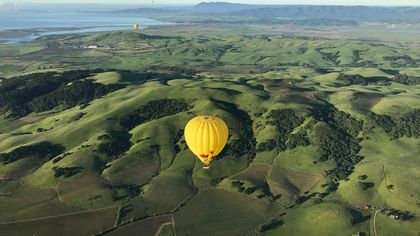
Travel Tips
Ensure a smooth journey with practical tips on transportation, navigating the region, and accommodating everyone’s wine preferences.
Do I need a rental car, or is it better to hire a driver?
Having a driver is often the best choice for wine-tasting trips, as it allows you to fully enjoy your experience without worrying about driving or navigation. A driver familiar with Napa can help you stay on schedule, suggest scenic routes, and make the trip more relaxing and enjoyable. If you prefer more independence, a rental car is an option, but remember to designate a sober driver.
How can I ensure we stay on schedule between tastings?
With multiple tastings and travel time between wineries, it’s easy to fall behind. A pre-arranged itinerary with built-in buffer time between appointments is essential. Hiring a driver also helps keep you on schedule, as they’ll be familiar with winery locations and travel times.
What should I do if some people in my group prefer different wine types?
Napa offers a wide variety of wines, so it’s easy to plan a tasting itinerary that accommodates everyone’s preferences. A wine tour planner can create a schedule that includes wineries specializing in different styles, like reds, whites, or sparkling wines, so each member of your group can enjoy something they love.
How long does it typically take to travel between wineries?
Travel time can vary, but most wineries are about 10-20 minutes apart by car. Wineries on the same route, such as the Silverado Trail, can be closer, while others may require a bit more driving. Planning wineries within the same area helps maximize your tasting time and reduce travel time.
What are the benefits of having a designated driver in Napa Valley?
A designated driver ensures everyone’s safety and keeps your itinerary on track. They also reduce the stress of navigation and let you fully enjoy tastings. Having a driver allows you to relax between stops, especially if your group plans to visit multiple wineries in one day.
Are Ubers and Lyfts available in Napa Valley?
Yes, ride-sharing services like Uber and Lyft operate in Napa Valley, but availability can be limited in more remote areas or during peak hours. For a seamless experience, consider pre-booking a car service or hiring a driver, especially if you’re visiting popular or remote wineries.
How do I prepare for a day of tasting with food and hydration?
Start with a hearty breakfast, and stay hydrated throughout the day by drinking water between tastings. Bring snacks or have lunch planned at one of the wineries, as food helps balance the effects of alcohol and keeps your energy up for a full day of tasting.
Is it possible to bring home bottles from our tastings?
Yes, most wineries offer the option to purchase bottles on-site, and some even offer discounts or shipping services. Shipping is especially useful if you buy several bottles or larger quantities.
What are some etiquette tips for wine tasting?
Wine tasting is casual but respectful. Listen to the host’s descriptions, don’t wear strong fragrances, and avoid discussing negative opinions too openly. Remember to pour out or spit wine if you don’t want to consume it all—this is common practice, and most wineries provide a designated spot for it.
How can I make the most of our time at each winery?
Arrive on time, be open to learning from the staff, and ask questions about the wines and winemaking process. Taking notes or pictures can help you remember which wines you liked best, and chatting with the staff often leads to more memorable experiences and personalized recommendations.
What are some scenic routes or stops along the way?
The Silverado Trail is one of Napa Valley’s most scenic routes, featuring rolling vineyards and beautiful valley views. There are also plenty of charming small towns, art galleries, and scenic overlooks. Your driver or tour guide can suggest additional photo-worthy stops and hidden gems along the way.
What items should I pack for a wine tasting trip?
Comfortable clothing, layers, sunscreen, water, a small notebook for notes, and a portable phone charger are essentials. A bag to hold purchases is also helpful if you plan to buy wine. Bringing these items helps you stay comfortable and prepared for a full day of exploring.
How can I accommodate dietary preferences in group dining reservations?
Most Napa Valley restaurants and wineries are very accommodating of dietary restrictions, but it’s best to inform them in advance. Letting your dining or tasting hosts know about specific dietary needs helps ensure everyone in your group has a comfortable and enjoyable experience.
What’s the best way to ship wine home if we buy too many bottles?
Many wineries offer shipping services and can arrange to send your purchases directly to your home, which is convenient and often temperature-controlled. If the winery doesn’t offer shipping, there are local wine shipping services that specialize in safe, efficient transport of wine to most states.
